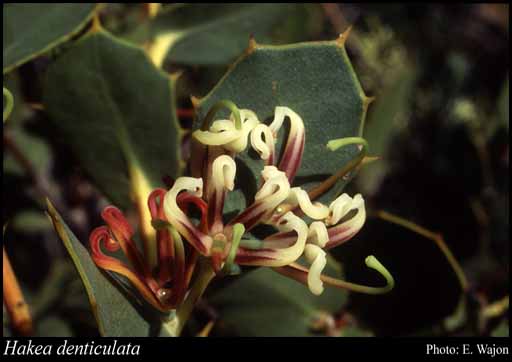- Reference
- Suppl.Prodr.Fl.Nov.Holl. 28 (1830)
- Conservation Code
- Not threatened
- Naturalised Status
- Native to Western Australia
- Name Status
- Current
Erect, multi-branched shrub, (0.4-)1-2.2 m high. Fl. purple-red/green-brown, Jul to Oct. Sand over laterite, clay loam, limestone, sandstone.

Scientific Description
Shrubs, 1-2 m high; branchlets hairy. Leaves alternate, 20-45 mm long, 10-25 mm wide, glabrous; lamina flat, clearly widest above the middle, once divided, pinnately divided, entire or shallowly divided. Inflorescences axillary, red; pedicels 4-5 mm long. Perianth 8.5-11.5 mm long, glabrous; ovary glabrous; pistil 10-13 mm long, pollen presenter oblique, style glabrous. Follicles 23-28 mm long, 10-12 mm wide, corky tetrahedral projections (on external surfaces of fruit) absent; seed 1.8-2.2 mm long (including wing), 7-8 mm wide, the wing discontinuous, marginal, extending down one lateral side only. Flowers in July, August, September or October. Occurs in the South-west (SW) Botanical Province(s), in the Jarrah Forest (JF), Mallee (MAL) or Esperance Plains (ESP) IBRA subregion(s).
Distribution
- IBRA Regions
- Esperance Plains, Jarrah Forest, Mallee.
- IBRA Subregions
- Eastern Mallee, Fitzgerald, Recherche, Southern Jarrah Forest.
- IMCRA Regions
- WA South Coast.
- Local Government Areas (LGAs)
- Albany, Cranbrook, Esperance, Gnowangerup, Jerramungup, Plantagenet, Ravensthorpe.